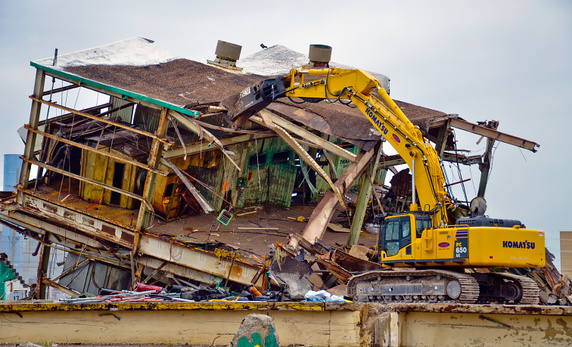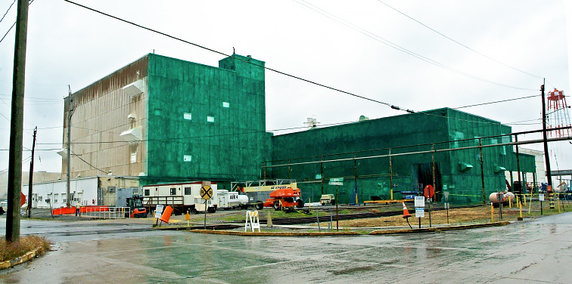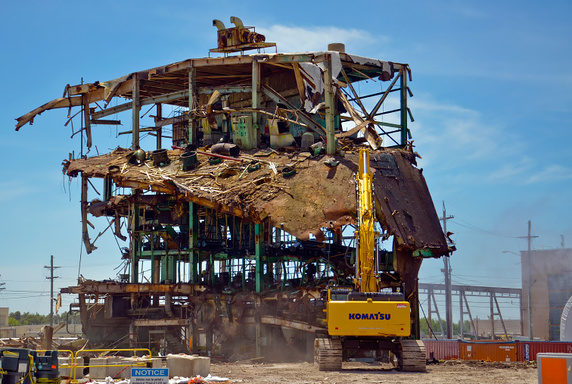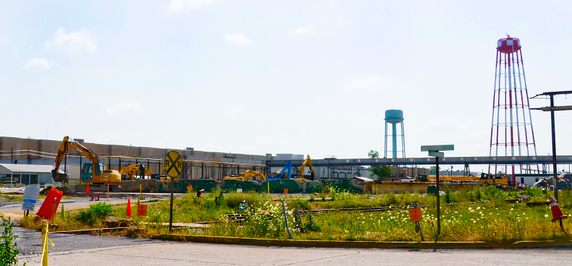EM's Paducah Site Completes Building Removals Once the building was down, heavy equipment operators began "top-down" shearing to safely remove the remaining structure. Demolition debris was then downsized and loaded into rail cars for shipment off site. PADUCAH, Ky. – EM recently completed demolition of the last of 32 inactive facilities to be removed as part of the cleanup scope that existed before commercial uranium enrichment operations ended at the Paducah Gaseous Diffusion Plant and the plant facilities were returned to DOE. View the demolition here. "This is an exciting milestone for the Paducah Site, and is a reflection of the exceptional work done by the men and women who work here," said Jennifer Woodard, the Paducah Site lead for EM's Portsmouth/Paducah Project Office. "Since 2004, we have safely removed 4,700 tons of waste related to the C-410/C-420 buildings complex, and importantly, this work has been accomplished while maintaining our focus on safety."  The C-410 building was covered in a protective fixative before demolition began.  An excavator with a shear attachment prepares to remove a section of floor from the upper levels of the C-420 building in the final stages of demolition. Constructed in 1956, the 116,000-square-foot C-410/C-420 Feed Plant at Paducah was used to produce uranium hexafluoride (UF6) for uranium enrichment during the Cold War. Located in the center of the gaseous diffusion plant (GDP), the Feed Plant operated until 1977, when the GDP began receiving UF6 from other sources such as Honeywell in Metropolis, Ill. Besides its role in the enrichment process, the Feed Plant included offices and a machine shop. Its footprint was originally almost five acres — roughly equivalent to four football fields — and its tallest building stood at 85 feet. Demolition included removal of 2,600 panels of cement asbestos siding and 9,000 feet of pipe. The siding panels are roughly 12 feet long by 3½ feet wide and weigh as much as 175 pounds each. Wearing protective equipment, workers manually removed the panels. Heavy equipment was used to lower the panels to the ground. Once removed, the remainder of the building was demolished to slab. The amount of waste generated from decontamination and demolition would be enough to cover one 15-foot-deep football field.  Debris from demolition is cleared from the slab, significantly changing the landscape of the plant. "The completion of the highly complex, multi-story Feed Plant demolition project dramatically changed the skyline of the GDP," said Darl Anderson, project integration and operations manager for LATA Environmental Services of Kentucky, EM's cleanup contractor at the site. "This project was a major part of LATA's more than three million work hours without a lost workday accident." The return of the GDP at Paducah from the United States Enrichment Corporation (USEC) was accepted by DOE in October 2014 and those facilities are currently undergoing deactivation in preparation for future decontamination and decommissioning. | 




Brak komentarzy:
Prześlij komentarz